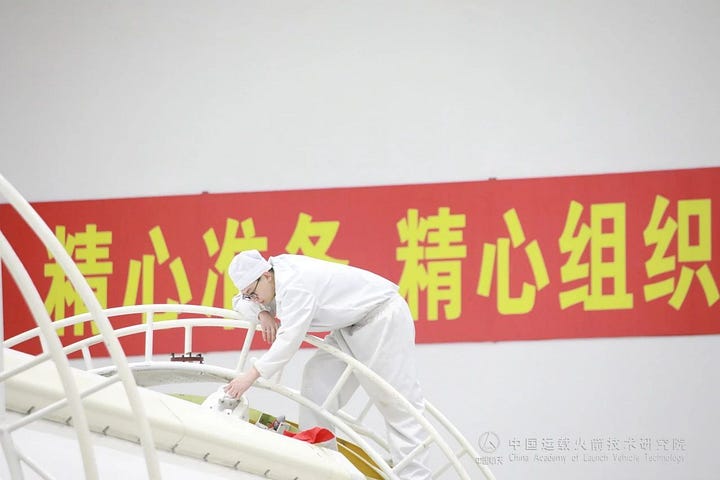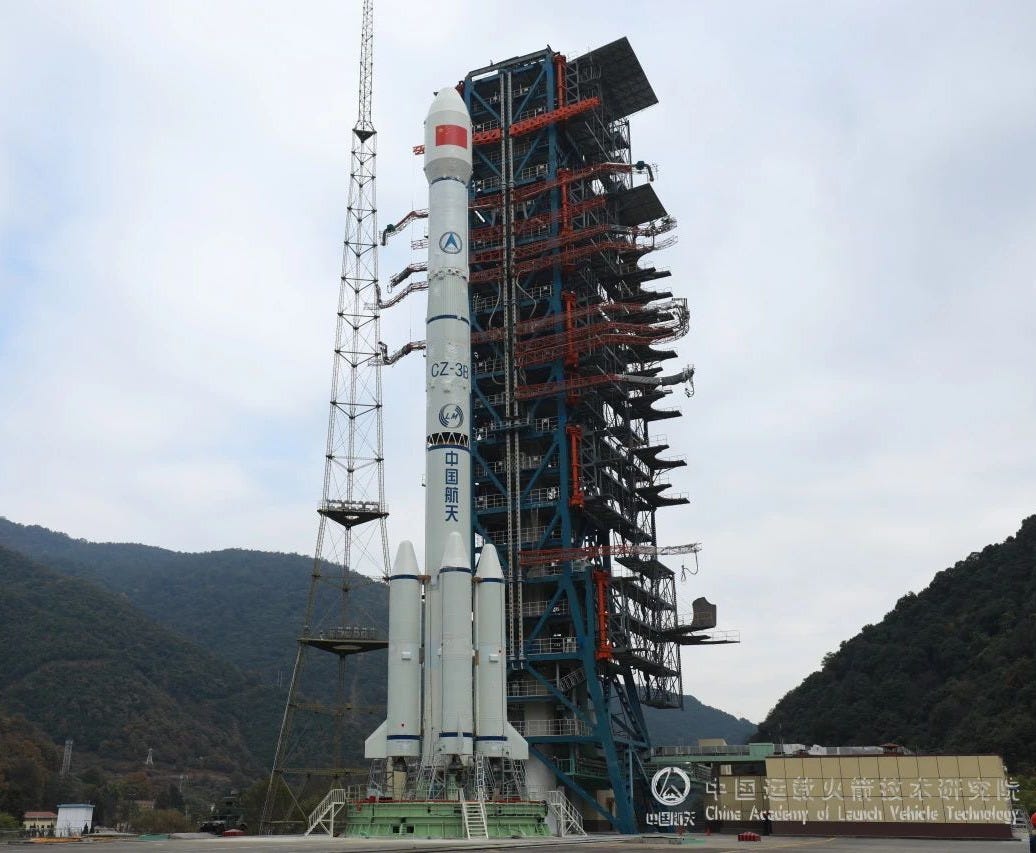Toward the next 100! [Long March 3B/E Y99]
The TJSW-12 satellite has been sent toward geostationary orbit with a Long March 3B/E launch.

A Long March 3B/E blasted off from Launch Complex 2 at the Xichang Satellite Launch Center at 23:12 pm China Standard Time, or 15:12 pm Universal Coordinated Time, heading for geostationary transfer orbit on December 20th.
Atop of the Long March 3B/E for this launch was the Shanghai Academy of Spaceflight Technology developed TJSW-12 satellite (通信技术试验卫星十二号), known as Communication Technology Experimental Satellite-12 in English. Like the previous TJSW satellite, uses for the satellite may include satellite communications, radio, television, data transmission, as well as technology testing.
In their post-launch blog post, the China Academy of Launch Vehicle Technology highlighted that today's Long March 3B/E launch, the one-hundred and first, occurred only seventeen days after the hundredth. The Academy’s blog post also stated that this was the final Long March 3A series (consisting of the Long March 3A, 3B, and 3C) launch for this year and for the academy.
In the future, the Long March 3B/E is planned to be launched over a dozen times per year over several years, according to the China Academy of Launch Vehicle Technology. To support this plans for manufacturing and launch cadence are stated as follows:
“In response to the needs of high-density launch missions, the model team innovatively proposed management methods and processes such as de-tasking. The Long March 3A series of rockets has become the first launch vehicle in China to carry out group batch production and use dual-station cross-parallel integrated testing, assembly and factory testing. It is the first launch vehicle to realize a team to carry out test launches of two rockets at the same time at the launch site, with the shortest interval of 15 days for the launch of a rocket.”
The China Aerospace Science and Technology Corporation also added:
“In addition, the model team has continued to promote the implementation of reliability and carrying capacity improvement projects in recent years, completing a new upgrade of the "Gold Medal Rocket" Long March 3A series, laying a solid foundation for a new round of high-density launch missions.”
If there are any problems with this translation please reach out and correct me.
Today’s mission was the 101st launch of a Long March 3B vehicle, and the 554th launch of the Long March launch vehicle series. Along with these, this was the 67th launch from China in 2024.
Liftoff video via Cosmic_Penguin on Twitter.
As of writing (December 20th), the Y number for this launch is believed to be Y99 based on the manufacturer’s mission patch, this article will be updated if clarified otherwise.
Chinese companies, state-owned and private, use Y followed by a number to serialize launch mission numbering, similar to NASA with STS.
Check out the previous Long March 3B/E launch
100 Long March 3B launches! [Long March 3B/E Y103]
On December 3rd, the one-hundredth Long March 3B vehicle lifted off from Launch Complex 3 at the Xichang Satellite Launch Center at 13:56 pm China Standard Time, or 05:56 pm Universal Coordinated Time. The vehicle flew with one satellite onboard tow…
What is the Long March 3B/E?
This section is for those less familiar with China's Long March series of launch vehicles.
The Long March 3B is an older-generation geostationary orbit workhorse of the China Academy of Launch Vehicle Technology. The first two stages and four boosters of the rocket burn Dinitrogen Tetroxide and Unsymmetrical Dimethylhydrazine, with liquid hydrogen and liquid oxygen in the third-stage.
Over the rocket's almost twenty-eight-year launch history, two versions of the vehicle have flown, the 3B and 3B/E. Since 2012 only the 3B/E variant has flown due to its increased payload capacity. The payload capacity of the launch vehicle is currently as follows:
11,500 kilograms to low Earth orbit
7,100 kilograms to a sun-synchronous orbit
5,500 kilograms into a geostationary transfer orbit
2,000 kilograms into geostationary orbit
The first-stage is powered by four YF-21C engines that burn Dinitrogen Tetroxide and Unsymmetrical Dimethylhydrazine to generate 302 tons of thurst, while the boosters are powered by one YF-25 engine burning the same fuel to generate 72 tons of thrust each. Combined the four boosters and first stage generate a thrust of 590 tons. The second stage is powered by one YF-22E and four YF-23F vernier engines that also burn Dinitrogen Tetroxide and Unsymmetrical Dimethylhydrazine to generate 81 tons of thrust. The third-stage is powered by two YF-75 engines that burn liquid hydrogen and liquid oxygen to generate 17 tons of thrust.
On the launch pad, the Long March 3B/E is 56.3 meters tall and weighs 458,970 kilograms when fully fuelled. The first and second-stage have a diameter of 3.35 meters, while the third-stage has a diameter of 3 meters, along with the four boosters diameter of 2.25 meters, and the fairing has a diameter of 4.2 meters.
So far every Long March 3B launch has occurred from the Xichang Satellite Launch Center, in the south of Sichuan province.








![100 Long March 3B launches! [Long March 3B/E Y103]](https://substackcdn.com/image/fetch/$s_!ukRs!,w_1300,h_650,c_fill,f_auto,q_auto:good,fl_progressive:steep,g_auto/https%3A%2F%2Fsubstack-post-media.s3.amazonaws.com%2Fpublic%2Fimages%2F50189ed0-75b1-4399-a238-4fa95c6946dc_1199x675.jpeg)
